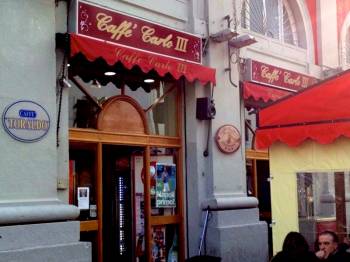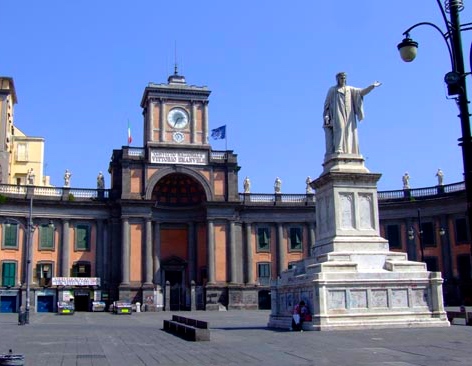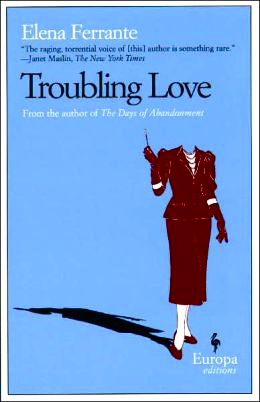Note: This novel was chosen one of the New York Times Notable Books for 2017.
“The title of this novel, in Italian, is Lacci, which means shoelaces. We see them on the cover, thanks to an illustration the author chose himself. A person, presumably a man, wears a pair of shoes whose laces are tied together. It is a knot that will surely trip him up, that will get him nowhere. We don’t see the expression on the man’s face, in fact we see very little of his body. And yet we fear for him, feel a little sorry for him, perhaps laugh at him, given that he already seems to be in the act of falling on his face.”—From the Introduction by Jhumpa Lahiri, a Pulitzer Prize-winning author in her own right, and the translator of this novel.

As translator Jhumpa Lahiri also explains, shoelaces are ties, and ties are connections, and this novel illustrates the connections – and disconnections – among a four people in one family, and one cat. The plot is not complicated. Aldo Minori, a college professor married to Vanda, has been unfaithful, leaving Vanda and his two children, Anna and Sandro, at home in Naples while he has gone off with a nineteen-year-old girl with whom he, age thirty-four, now believes he is experiencing real love for the first time. Vanda has not heard from him in six days, and he has been living apart from her for two months. In a scathing letter to him, she mocks him for not answering her last letter and her phone calls to him at the university in Rome where he teaches. Appealing to his emotions and his love for the children, she “pushes buttons” in an effort to make him feel guilty and plays the “woman card,” emphasizing that she is afraid. The house is isolated and she fears that she will be robbed of the television and record player. She wonders if someone angry with him might kill her and the two children in their sleep for revenge. Then she warns: “Don’t make me lose my patience, Aldo, be careful. If I start to lose it, I’ll make you pay.”
As her list of his failings goes on, in what appears to be the same letter, the reader discovers that Vanda has also had a conversation with Lidia, the new lover, and that Vanda and the family have moved to a less expensive apartment. Time has passed, and as time continues to pass, and her “letter” to Aldo continues over the space of three years, Vanda takes action against him to end his relationship with his children, who, she believes, have not mattered to him during their three year separation. At the end of this first section, four years have passed. Vanda now has a steady job, and son Sandro is thirteen and Anna is nine. In a recent letter to Vanda, Aldo has apparently written to ask if he may see the children, with whom he wants to establish a relationship. His own relationship with his parents was tainted by his father’s infidelity, and he realizes that he does not want his children to have the problems that he has had. The children agree to see him. Vanda is not pleased.
Part II surprises by jumping forward about forty years and bringing the reader up to date on the lives of Vanda, Aldo, and the children as senior and middle-aged citizens. In this longest section of the book, told from the point of view of Aldo, the relationship and the ties among the family members become even more complex, and in some cases permanently damaged, as a result of the much earlier separation between Aldo and Vanda. The now-adult children reveal their problems with both Aldo and Vanda. At the same time, these adult children also have problems with each other, showing in detail the myriad ties and resentments and their effects upon the members of this family. Part III, told through a section of dialogue between Anna and Sandro as they discuss their own lives and responsibilities as adult members of a whole new generation, ties up the themes and motifs throughout the book. Even the family cat does not escape. We are all connected, the author is saying, and though we can try to put aspects of our past and our present into “boxes” for safety, our ability to keep those boxes closed and “tied” depends on our emotional health and determination.

As Sandro and Anna remember their first meeting with their father after several years of absence, Anna recalls that he took them to a place in Piazza Carlo III. Sandro says this memory is wrong.
Additional themes are concerned with aging, with making commitments, with planning for the future (as opposed to living for the moment), with how we define love and its connection to freedom, and with our search for contentment and whether it can be construed as a kind of love, adding density to the themes. Even the relationship between parents and children and how those are tied by a complex relationship that involves elements of both love and obligation are illustrated here. Though this novel is short, it feels much longer and much broader, without becoming tedious or overtly allegorical. Starnone, aided by his sensitive translator, makes every word count in this domestic novel of big ideas, and he keeps the story intriguing at the same time.

Piazza Dante Alighieri, where Sandro says their mother took them to meet their father, is a different memory from what Anna has of the same event. Photo by stefanomolinari.com
And speaking of ties. It is impossible, at this point, to avoid some commentary here about this novel and author, and the reclusive author Elena Ferrante and her identity. Some critics have pointed out the similarity between the plot of this novel and that of Ferrante’s Days of Abandonment, published in 2005, seven years before the first of the four recent novels in the “Neapolitan Quartet.” For several years, during the immense popularity of that new quartet, beginning with My Brilliant Friend, Starnone was posited, occasionally, as the “real” Elena Ferrante. Last year, a reporter traced real estate transactions and decided that the “real” Elena Ferrante was, in fact, Starnone’s wife, also a writer. I don’t know if any of that is true, and, frankly, I don’t care. As far as this book is concerned, I found it far more compressed than the Neapolitan quartet, of which I read and reviewed the first three novels. After reading more than twelve hundred pages devoted to the relationship between two Neapolitan women, their friends and associates, along with many pages of genealogies for the families, however, I decided I’d read enough about the lives these two women, and I did not read the last book in the series.
 I have long been intrigued by Ferrante’s Troubling Love (2006), a novel of only 139 pages, for the author’s ability to compress and condense, much as the author of this novel does, and I have been a bit disappointed at the popularity of the Neapolitan quartet, which, for me, has soap operatic qualities. This novel, Ties, feels much more like the earlier Troubling Love. I am not saying this as part of an argument, one way or the other, regarding the “ties,” if any, between Starnone and Ferrante. I do not care about that. I am just saying that I liked this novel better than the Neapolitan quartet because of its compression, and I look forward to his next novel, which I hope will be as concise and pertinent as this one.
I have long been intrigued by Ferrante’s Troubling Love (2006), a novel of only 139 pages, for the author’s ability to compress and condense, much as the author of this novel does, and I have been a bit disappointed at the popularity of the Neapolitan quartet, which, for me, has soap operatic qualities. This novel, Ties, feels much more like the earlier Troubling Love. I am not saying this as part of an argument, one way or the other, regarding the “ties,” if any, between Starnone and Ferrante. I do not care about that. I am just saying that I liked this novel better than the Neapolitan quartet because of its compression, and I look forward to his next novel, which I hope will be as concise and pertinent as this one.
ALSO by Starnone: TRICK, TRUST
Photos, in order: The author’s photo appears on http://www.ilsussidiario.net
Translator Jhumpa Lahiri’s photo, by Lianna Miuccio, is from http://www.vogue.com/ Lahiri is a Pulitzer Prize winner in her own right for her story collection, The Interpreter of Maladies.
Piazza Caffe Carlo III, where Anna remembers seeing her father for the first time after several years’ absence. https://www.yelp.com
Piazza Dante Alighieri, where Sandro insists his father met them. Both remember vividly the experience, but they do not agree about where it took place. Photo by Stefano Molinari. http://www.travelforpassion.com


